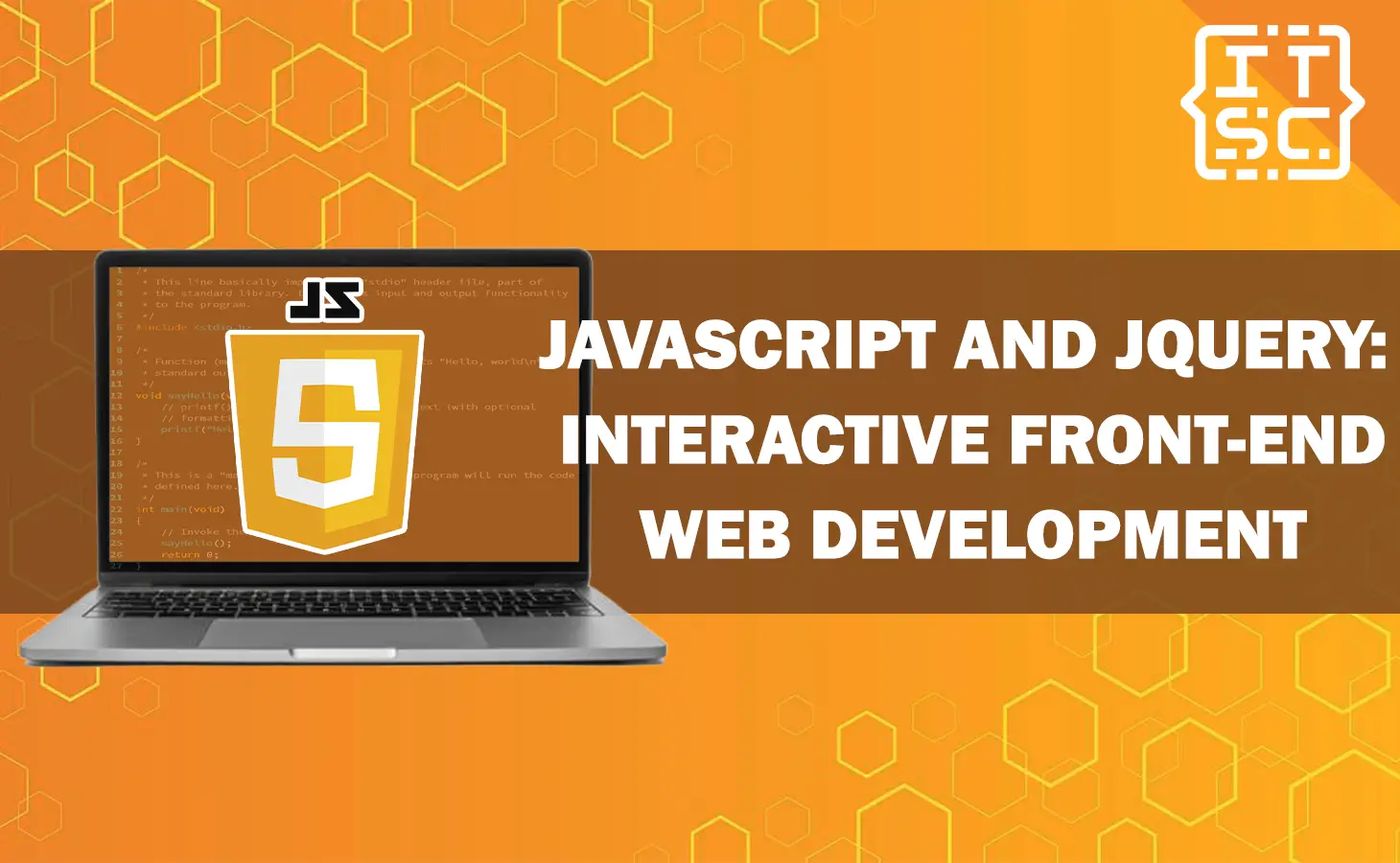Welcome to the exciting part of interactive front-end web development powered by JavaScript and jQuery.
In this article, you will have to learn web development, providing you with the knowledge and skills needed to create engaging and interactive web applications.
What is JavaScript and jQuery?
JavaScript and jQuery are the dynamic duos of web development, providing powerful tools to improve user experiences and add interactivity to websites.
Let’s proceed with the key aspects of these technologies.
Here are some essential concepts:
- Variables and Data Types:
- JavaScript supports different data types such as numbers, strings, and booleans. Use variables to store and manipulate data.
- Conditional Statements:
- Learn to use if, else if, and else statements for decision-making in your code.
- Loops:
- Understand for and while loops to repeat actions in your scripts efficiently.
- Functions:
- Create reusable blocks of code with functions, making your code modular and easier to maintain.
- DOM Manipulation:
- The Document Object Model (DOM) enables you to interact with HTML and XML documents dynamically.
Also Read: What is JavaScript Used for in Web Development?
Using the Power of jQuery
jQuery is a fast and succinct JavaScript library that shortens DOM manipulation and event handling.
Here’s what you need to know:
- Selectors:
- Use CSS-style selectors to target and change HTML elements conveniently.
- Event Handling:
- jQuery shortens event binding, making it easy to respond to user interactions.
- Animations:
- Create smooth animations and transitions to improve user engagement.
- AJAX:
- Asynchronous JavaScript and XML (AJAX) allow you to load data from the server without refreshing the entire page.
Combining JavaScript and jQuery
When used together, JavaScript and jQuery become a formidable force in web development. You can smoothly integrate them to build interactive features, validate forms, and create responsive designs.
Advantages of Interactive Web Development
Interactive web development provides multiple advantages:
- Engagement:
- Interactive websites captivate users and keep them engaged longer.
- User Experience:
- Improve the overall user experience by providing real-time feedback and responsiveness.
- Increased Functionality:
- Implement complex features like sliders, image galleries, and interactive maps.
- Compatibility:
- JavaScript and jQuery are supported by all major browsers, assuring a consistent experience for users.
Example codes in JavaScript and jQuery
Here are some simple example codes in JavaScript and jQuery to help you get started with interactive front-end web development:
JavaScript Examples:
Alert Dialog:
// Display an alert dialog when a button is clicked
document.getElementById('myButton').addEventListener('click', function() {
alert('Button clicked!');
});
DOM Manipulation:
// Change the text of an HTML element
document.getElementById('myElement').innerHTML = 'New Text';
Form Validation:
// Validate a form input field
function validateForm() {
var inputField = document.getElementById('myInput');
if (inputField.value === '') {
alert('Please enter a value');
return false;
}
}
jQuery Examples:
Show and Hide Element:
<!-- HTML -->
<button id="showButton">Show Element</button>
<button id="hideButton">Hide Element</button>
<div id="myDiv">This is a hidden div.</div>
<!-- jQuery -->
<script src="https://code.jquery.com/jquery-3.6.0.min.js"></script>
<script>
$(document).ready(function() {
$('#showButton').click(function() {
$('#myDiv').show();
});
$('#hideButton').click(function() {
$('#myDiv').hide();
});
});
</script>
AJAX Request:
<!-- HTML -->
<button id="loadData">Load Data</button>
<div id="dataContainer"></div>
<!-- jQuery -->
<script src="https://code.jquery.com/jquery-3.6.0.min.js"></script>
<script>
$(document).ready(function() {
$('#loadData').click(function() {
$.ajax({
url: 'data.json',
dataType: 'json',
success: function(data) {
$('#dataContainer').html(data.message);
}
});
});
});
</script>
Animate Element:
<!-- HTML -->
<div id="animatedBox" style="width: 100px; height: 100px; background-color: blue;"></div>
<!-- jQuery -->
<script src="https://code.jquery.com/jquery-3.6.0.min.js"></script>
<script>
$(document).ready(function() {
$('#animatedBox').click(function() {
$(this).animate({width: '200px', height: '200px'}, 'slow');
});
});
</script>
These are just basic examples to illustrate the concepts of JavaScript and jQuery. You can use them as a starting point and build more complex interactions and functionalities for your web applications.
Frequently Asked Questions
Absolutely! JavaScript and jQuery complement each other beautifully. You can use jQuery to integrate common tasks within your JavaScript code, making development more efficient.
Yes, there are alternatives like React, Angular, and Vue.js. These frameworks offer more extensive capabilities for building interactive web applications but come with steeper learning curves.
Practice is key. Start with small projects, study existing code, and explore online tutorials and documentation. Join developer communities to learn from others.
Absolutely! JavaScript remains a fundamental skill for web developers. It continues to evolve, with new frameworks and libraries constantly emerging.
Conclusion
In this article, we have discussed interactive front-end web development with JavaScript and jQuery. These technologies are at the heart of creating captivating and engaging web experiences.
Remember to practice, explore, and stay updated with the latest developments to become a proficient web developer.

